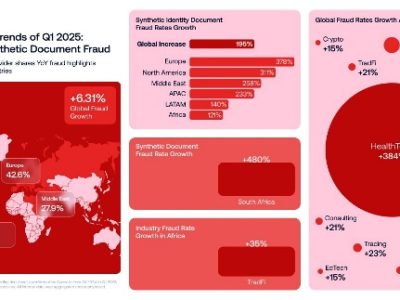Insider threats take centre stage: Companies acknowledge inadequate budgets to address the root cause of breaches
J2 Software, a DTEX Systems partner, has emphasised the inadequacy of current cybersecurity budgets in addressing the core cause of data breaches: insider risks. A recent survey revealed that 58% of organisations believe their budgets allocated to manage insider risks are insufficient to effectively mitigate the increasing costs and frequency of security incidents instigated by individuals within the organisation.
RELATED: How can AI prevent insider threats?
DTEX Systems, the global leader for insider risk management, in collaboration with the Ponemon Institute, recently unveiled the 2023 Cost of Insider Risks Global Report. This independent study disclosed a staggering 40% rise over four years in the average annual cost of insider risks, now totalling $16.2 million. Concurrently, the average duration to contain an insider incident has surged to 86 days.
J2 Software CEO John Mc Loughlin says in addition to scrutinising the financial implications of insider security incidents, this year’s study sheds light on how organisations are funding their insider risk programs.
“The research highlights that nearly half (46%) of organisations are planning to bolster their investment in insider risk programs in 2024. “Moreover, an overwhelming 77% of organisations have either initiated or are in the process of implementing an insider risk program,” he explains.
DTEX Systems CTO Rajan Koo says they are encouraged that organisations plan to increase investments in insider risk programs because it’s required by customers and new industry regulations – not just because of previous incidents. “This is a significant change that portends long-overdue attention and prioritisation.”
This momentum in insider risk management occurs amidst escalating costs, frequency, and containment timelines for insider-related security incidents.
As defined by research analyst Gartner, insider risk management encompasses “the tools and capabilities to measure, detect and contain undesirable behaviour of trusted accounts within the organisation.”
Mc Loughlin adds: “Despite the rising costs associated with insider risks, a substantial 88% of organisations allocate less than 10% of their total IT security budget towards managing these internal threats. Shockingly, organisations boast an IT security budget averaging $2,437 per employee, with a mere 8.2% ($200 per employee) designated specifically for insider risk programs and policies.”
Koo emphasised that these findings underscore a diversion of budgets towards reactive “symptom management” despite mounting evidence that the root cause lies within the human factor, represented by insider risks.
“The findings illuminate that insiders, manifesting as insider risks, are the primary cause of data breaches, including those stemming from social engineering. This highlights a pervasive misunderstanding of the various forms of insider risks and the failure to proactively safeguard customer data and intellectual property,” he added.
The 2023 Cost of Insider Risks Global Report offers a comprehensive analysis to comprehend the financial ramifications of insider risks, stemming from either negligent or inadvertent employees, outsmarted employees (including insider incidents linked to credential theft), or malicious insiders.
The study drew insights from 1,075 security or line of business practitioners in 309 organisations across North America, Europe, the Middle East, Africa, and the Asia-Pacific region.
Dr. Larry Ponemon, Chairman and Founder of the Ponemon Institute commented: “Our goal in conducting this research is to create awareness of the significant costs incurred when employees are negligent, outsmarted or malicious in the handling of an organisation’s sensitive data.”
“We believe this study is unique because it analyses the costs based on the type of insider, the time it takes to contain the incident and the technologies that are most effective in reducing the costs. Such information is beneficial in creating a strategy to deal more effectively with the insider risk while reducing the costs.”
Key findings of the 2023 Cost of Insider Risks Global Report include:
- The average annual cost of an insider risk has risen 40% over four years to $16.2M – up from $15.4M in 2022.
- The average number of days to contain an insider incident in 2023 has increased to 86 days. The longer it takes to respond, the higher the cost ($18.33 million for incidents that take more than 91 days to contain).·
- Organisations are spending less than 10% of their IT security budget on insider risk management. Organisations had an average IT security budget of $2,437 per employee, yet only 8.2% (equivalent to $200 per employee) was allocated specifically to insider risk management programs and policies.
- Most insider risk budget is spent after an insider incident has occurred. Only 10% of insider risk management budget (averaging $63,383 per incident) was spent on pre-incident activities: $33,596 on monitoring and surveillance, and $29,787 on ex-post analysis (this includes activities to minimise potential future insider incidents and steps taken to communicate recommendations with key stakeholders). The remaining 90% (averaging $565,363 per incident) was spent on post-incident activity cost centres: $179,209 on containment, $125,221 on remediation, $117,504 on investigation, $113,635 on incident response, and $29,794 on escalation.
- Insider risk program funding set to increase. Despite the fact that most organisations allocate an average of 8.2% of their IT security budgets to insider risk programs, 58% view current spending as inadequate and 46% expect funding to increase in the next year. Seventy-seven percent of organisations have started or are planning to start an insider risk program.
- Non-malicious insiders cause most insider incidents. Seventy-five percent of respondents said the most likely cause of insider risk is non-malicious: a negligent or mistaken insider (55%), or an outsmarted insider who was exploited by an external attack or adversary (20%).
- More than half of non-insider attacks are caused by social engineering. Fifty-three percent of organisations said social engineering (including phishing, pretexting and business email compromise) was a leading cause of non-insider or external attacks.
- Financial services and service organisations have the highest average activity costs. The average activity cost for financial services is $20.68 million and services (including accountancy, consultancy and professional services firms) is $19.09 million.
- Top-down support is the gold standard. Among organisations that have or plan to have a dedicated insider risk program, 52% report that top-down support and championing of the program (e.g. an insider risk steering committee) is a key feature. Fifty-one percent have a dedicated cross-functional team from legal, human resources, line of business and IT security.
- AI/ML essential to insider risk management. One-third of organisations view artificial intelligence and machine learning as essential to prevention, investigation, escalation and containment and remediation of insider incidents, while 31% view it as very important.





























